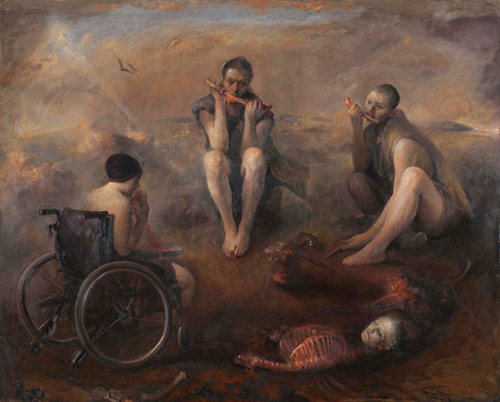Sixteen never-before-seen works by monumental kitsch painter Odd Nerdrum are on view in New York City through July 30. A leading champion of Apelles’ ancient palette of white, black, yellow, and red, Nerdrum transports viewers through deep humanistic narrative and so much more.
Chances to view the works of internationally acclaimed kitsch painter Odd Nerdrum are few and far between, which makes his current solo exhibition at New York’s Booth Gallery all the more exciting. “Crime & Refuge” showcases 16 of the European-based painter’s newest works in a show that “shares its name with Nerdrum’s 455-paged monograph,” the gallery writes. “The work embodies Nerdrum’s vision of human experience in the form of love, solitude, and struggle set in the dusty atmosphere of bleak Martian-like landscapes. Humanistic narratives seep through the canvases and illicit visceral responses — especially in such works as ‘Dustlickers’ and ‘Cannibals,’ which challenge the viewer not to look away.”

Odd Nerdrum, “On the Border,” 2015, oil on canvas, 78 x 70 in. (c) Booth Gallery 2016

Odd Nerdrum, “Cannibals,” 2005, oil on canvas, 98 x 79 in. (c) Booth Gallery 2016
“Crime & Refuge” remains on view through July 30 in New York City. To learn more, visit Booth Gallery.
This article was featured in Fine Art Today, a weekly e-newsletter from Fine Art Connoisseur magazine. To start receiving Fine Art Today for free, click here.








